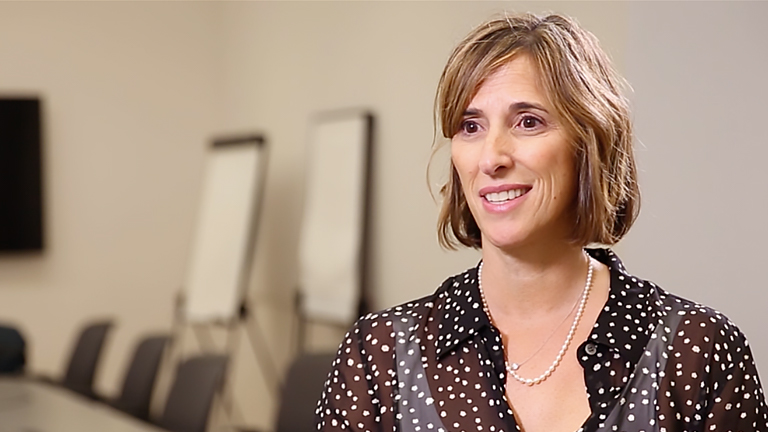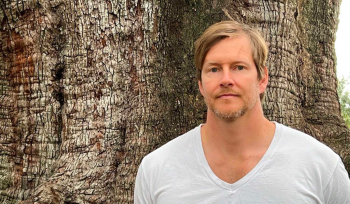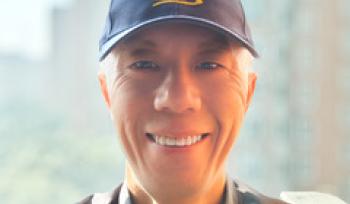Plantronics is a global consumer electronics company headquartered in Santa Cruz, California, with more than 3,000 employees. Plantronics started manufacturing lightweight headsets in 1961 for commercial aviation and the space program, and is best known today for its communications equipment for business call centers.
Organizational Challenge
Like many manufacturers in the tech space, Plantronics faces considerable challenges adapting to the rapid rise of digital technologies. “With new technologies creating a disruption in our industry, there’s always a risk of products or services becoming obsolete at some point,” says Marguerite Kunze, VP of Talent Management and Organizational Development.
The company retooled its strategy accordingly in 2015, setting aggressive goals for growth, adopting a global approach to organization, and actively planning for the next generation of products. “That might mean leveraging data and analytics to improve product performance, or helping people manage multiple devices and data streams in a seamless way—or it might be a radically different technology that takes the company in a whole new direction,” Kunze says. With such a potentially dramatic change on the horizon, the company needed to begin preparing its front-line leaders immediately.
What’s more, recent employee surveys had indicated the need for more comprehensive leadership development. “We recognized a need for a cultural shift,” Kunze says. “How could we become more agile, and fast, and accountable? We needed to give our managers the right skills.”
Program Overview
Plantronics approached UC Berkeley Executive Education about developing a program to train its leaders to adapt to change—which happens to be the research focus of faculty director Homa Bahrami. Bahrami has studied Silicon Valley companies for the past 30 years, looking at how people and organizations constantly reinvent themselves in a rapidly changing environment.
“Many of the leadership tools and techniques taught today were developed for a world that was much more stable, when a product’s life cycle could be measured in years and customers remained loyal,” Bahrami says. “But that’s industrial age thinking rather than digital age thinking. Digitization means you have to deal with change daily. The secret to success is what we call ‘super-flexibility,’ the ability to dynamically adapt on a regular basis.”
Bahrami, along with UC Berkeley-Haas professor and communication expert Mark Rittenberg, developed a customized three-day leadership program based on Plantronics’ unique needs. The first day’s theme was “Leading Yourself”—an in-depth exercise in self-awareness. Participants took a survey that identified what Bahrami calls their “adaptive DNA,” meaning their own personal capacity for and approach to change. Rittenberg then led an experiential session that helped participants tell their leadership stories and receive feedback.
Day Two, themed “Leading Others,” dealt directly with the skills needed to lead teams. Participants received 360-degree feedback from their own co-workers, followed by a session where they learned effective coaching skills and practiced those with other participants.
Day Three, “Leading the Business,” focused on the particular disruptions Plantronics would be facing as a company, encouraging participants to think deeply about the impact of technology and globalization on their specific business areas. Kurt Beyer, UC Berkeley-Haas professor and senior partner in a Bay Area entrepreneurship investment firm, challenged the leaders to think differently and to bring an entrepreneurial and innovative mindset to their strategic planning. The day ended with an action planning session guided by a template from Bahrami—how would participants leverage their own adaptive DNA to bring about change? How would they take action with their teams back at the office and address the feedback they’d been given? Each participant left with a call to embody “leader as teacher” by delivering a workshop that would cascade their learnings to the rest of the organization.
“I can’t say enough about Homa Bahrami and the program she put together,” Kunze says. “She created a real sense of support for risk-taking, where participants felt they could try things, role-play, practice, and not be judged. Even our most shy, reserved engineers got engaged.”
Participants Profile
“UC Berkeley took the time to really get to know us as a company, listened carefully to our needs, and put together a spectacular program for us. Homa Bahrami went above and beyond and made a huge difference for us with this program.”
Program Results
Bahrami learned from the final program feedback that participants had noticeably improved their confidence when they returned to work. “They realized they weren’t alone,” she says, “that they could thrive in a world of change rather than be a victim. They also developed a common set of tools and vocabulary even though they came from different siloes in the organization."
Kunze has noticed more successful adaptations to change throughout the company as a result of the training. Further, a core group of individual leaders really embraced the Berkeley teaching and have become company superstars, calling Kunze regularly to update her on successes and discuss unique solutions to problems. “One of our regional sales managers, for example, has really changed the dynamic of how she runs her team and has strengthened the quality of their decisions,” Kunze says.
Overall, Kunze has seen improvement in employees’ accountability, communication, decision quality, self-awareness, and team organization. “We started building a foundation for change with Berkeley, and the training has helped to change our mindset,” she says. “I see more adaptability to change in general. It’s just going to be part of our DNA now.”





